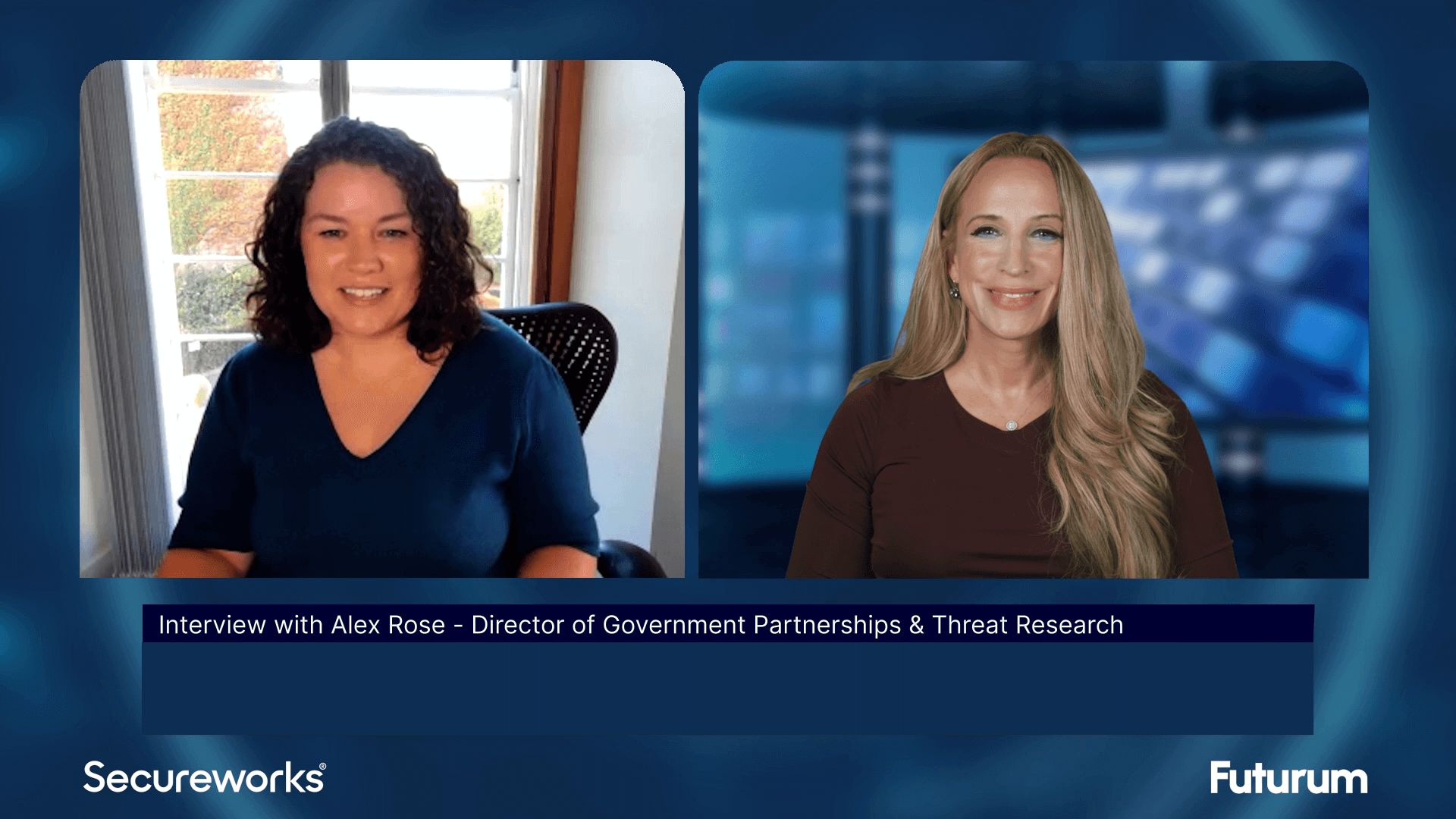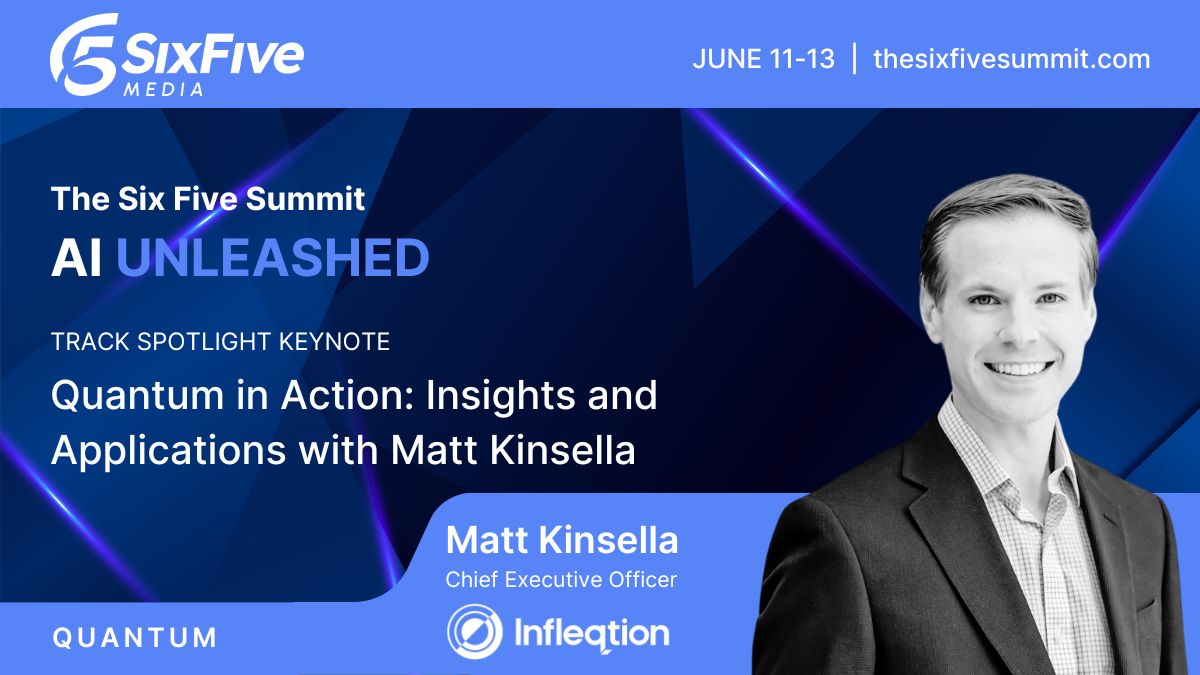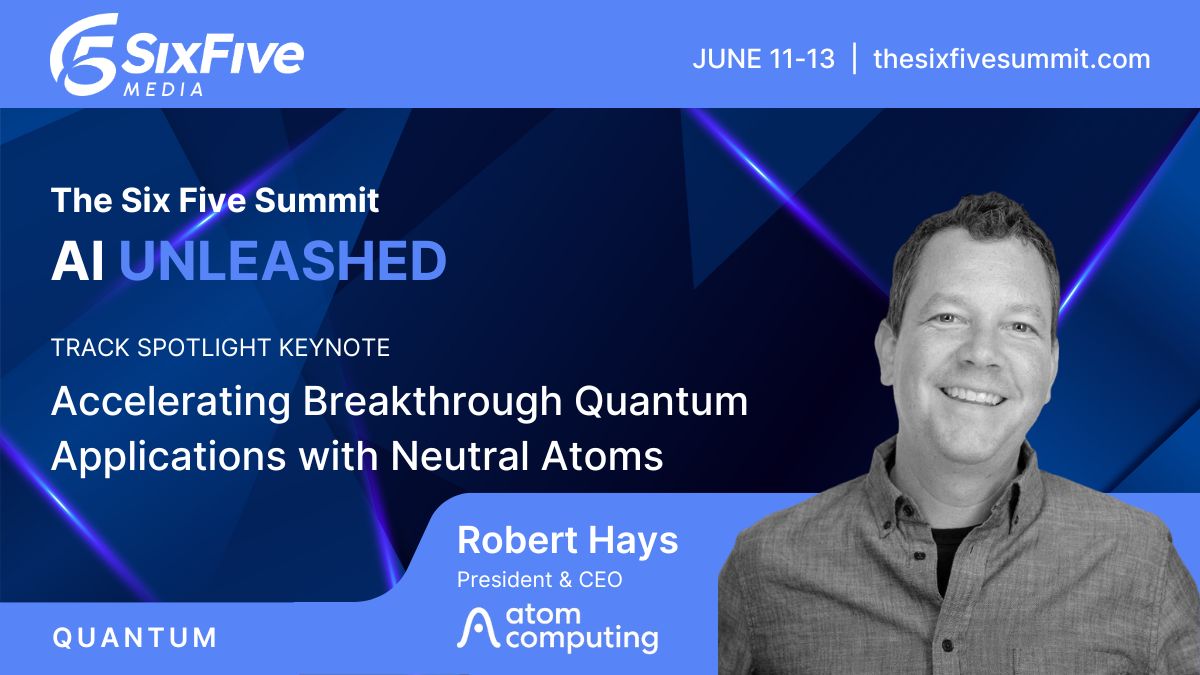The Future of IOWN – Enabling a New Infrastructure Beyond the Limits of Current Technology
Sean Lawrence and Mikhael Liberman join Will Townsend to discuss IOWN, an innovative infrastructure set to revolutionize data processing and transmission through optical and photonic technologies.
Imagine a network with near zero latency, high capacity, and minimal power consumption. Six Five Media host Will Townsend is joined by Sean Lawrence, Vice President and Head of IOWN Development Office at NTT, who shares how the emerging communication and computing infrastructure, #IOWN, is designed to transcend the limitations of current technology with optical and #photonic technologies.
Key takeaways include:
- Comprehensive Optical Approach: IOWN envisions a future where data transmission, within servers, boards and chips to across long distance networks, is faster and more efficient through the use of photonics.
- Multi-Stage Rollout: IOWN is being deployed in phases, starting with long-distance all photonics networks (1.0), followed by board-to-board (2.0), chip-to-chip (3.0), and ultimately, die-to-die (4.0) optical connections.
- Benefits for AI: IOWN’s high bandwidth and extremely low latency make it ideal for supporting the growing demands of #AI workloads, enabling distributed and efficient #AIinfrastructure.
- Sustainability Focus: IOWN’s lower power consumption, while still delivering high capacity and flexibility, contribute to a more sustainable IT ecosystem.
Learn more at IOWN Global Forum on the future of data transmission and processing.
Watch the full discussion above, and be sure to subscribe to our YouTube channel, so you never miss an episode.
Will Townsend:
Welcome to another Six Five Media virtual podcast. I’m Will Townsend. I manage the networking and security practices for Moor Insights and Strategy. And joining me today is Sean Lawrence. He’s the vice president and head of the IOWN development office with NTT. Sean, how’s it going?
Sean Lawrence:
Yeah, I’m doing quite well. I’m usually based in Tokyo, but I’m here in Texas for an NTT Data event to run innovation and yeah, it’s been an interesting couple of days.
Will Townsend:
I bet it has been. And I enjoyed meeting you in Tokyo. I was at the R&D forum, I’ve been there the last two years and I want to talk about IOWN and normally I don’t start off with a hot take question, but I think it’s appropriate here. What’s the most exciting thing to you about IOWN?.
Sean Lawrence:
Right. So I think IOWN has got a couple kinds of benefits or exciting points and it’s kind of unusual how they all come together. So with IOWN, we think we can really improve the performance of ICT or IT infrastructure at the same time as improving sustainability and even adding in. What’s surprising to me is that on top of those two, we can actually make things a lot more flexible. So it brings a lot more flexibility to how we can design and implement IT infrastructures. So those three together, I guess sustainability, performance and flexibility all coming together.
Will Townsend:
Well, it’s an ambitious goal certainly. It’s an all photonics optical network and I know that it’s going to roll out in different stages. But before we get to that point, can you basically summarize in a little bit further detail like what. What’s involved in all of this?
Sean Lawrence:
Right. So IOWN is a, I guess it’s kind of like a paradigm shift in not just networking and in all data transmission and not just on the network, but also inside computers. We basically want to, you know, the transmission capabilities of photonics is superior to transmission capabilities of electronics. And you know, we built a lot of IT equipment, servers, networking gear, etc. Based on electronics. But what we essentially want to do with IOWN is switch pretty much comprehensively data transmission from electronic data transmission to optical or photonic data transmission. And that goes all the way to the WAN. We’ve been doing that for a while, but all the way down into data centers, into the servers themselves. The data transmission between the circuit boards inside the computer, the data transmission between the silicon packages on a circuit board, and even the data transmission between the silicon die inside a package. We’re talking from the real fundamentals inside the computer all the way through the WAN. We want all the data transmission to be done in photonics instead of electronics. That’ll bring, as I mentioned before, higher performance, much lower electricity consumption, lower heat, lower cooling requirements, and also the properties of photonics. We can transmit data over longer distances than electronics. That brings a lot of flexibility ultimately into how we can design computers, data centers, et cetera.
Will Townsend:
Taking that photonics technology that exists for optical transport, bringing that down to the device and server level, to your point. And it’s quite ambitious. I know this is a multi staged rollout. I believe you started with 1.0, you’re moving to 4.0. I think this year you’re going to focus on 2.0, which is the device and board to board communications that you’re talking about. Maybe you could step through each of these iterations and talk a little bit about the applications and the use cases that can benefit from each.
Sean Lawrence:
We’re starting with refining the WAN side of things, refining the long distance. So that’s what we call the all photonics network ion 1.0. And really it’s about architecting long distance networks so that you maintain a single wavelength end to end across the whole network and you never convert to electronics between those endpoints. And that gives you really the fastest possible latency, very high throughput, essentially zero jitter, zero packet loss. So it’s a really, you know, it’s a super high quality network if you can architect things. So you maintain that wavelength from end to end customer site to customer site. So that’s, that’s 1.0. And that technology, you know. We’ve launched as a carrier service in Japan and we’re working on a couple ideas to bring that to market outside Japan now. So 1.0 is not the future. It’s kind of ready and in some places already available and yet we’re working on more locations. 2.0 is, as you mentioned, board to board connecting the circuit boards, you know, the circuit boards inside of the computer, connecting them with optical data transmission instead of electronic data transmission. And that one is, you know, different stages are different levels of R and D. You know, 1.0 is essentially ready. 2.0, the board to board is I would say is the development stage. And coming up at the Osaka Expo starting in a couple months, we’re going to have the first prototype of that IOWN 2.0 board to board connections and yet we hope to be able to commercialize that in the next year or two..3.0 getting even smaller. You know, it’s really kind of. The R and D focus is miniaturizing, miniaturizing, miniaturizing these optical communications components so that we can make it smaller and smaller, deeper, deeper inside the computing architecture. So 3.0 is when we start connecting the silicon packages, colloquially we call them chips, but it’s actually technically a package that’s soldered onto the circuit boards. So connect those with optical data transmission. That’s still a few years out. And really in the research phase is inside one silicon package you have multiple silicon dies, have them communicate via optics instead of electronics. And so that’s kind of the full journey. And the later stages are definitely research. The earlier stages are pretty much ready for showtime.
Will Townsend:
From a semiconductor perspective, you can integrate things, you can do 3D packaging. It just improves, improves performance, right? It minimizes the board layout and you can just basically have more flexibility from a design perspective. And what I find really exciting is I’ve gotten to know the NTT team and have really kind of dove very deeply into IOWN and what you’re doing here is the opportunity for it to support modern AI workloads. I mean, these are power hungry, very compute intensive workloads. And I’d love it if you could spend a little bit of time and talk about how you see IOWN facilitating the next generation of agentic and generative AI applications, right?
Sean Lawrence:
So we’ve been working with some partners. We have this big ecosystem. When we talk about shifting IT infrastructure from chip design up through server design, how you arrange your circuit boards, how you build your data centers, it’s not something any one company is going to be able to affect across the whole IT landscape. So we’ve taken this kind of open standards based approach with the IOWN Global Forum and we’ve got 155 members now, a lot of the leading companies in the world, from hyperscalers to server manufacturers, networking equipment makers, et cetera. So we’ve got this whole ecosystem that we’re working together with to make this shift. And inside that IOWN Global Forum there are a number of different POCs that people are doing, different members have done, and we’ve done etc. Around AI. So one of our businesses, Docomo Business, did some AI experiments. And so for example, if we have, if you, if many companies don’t have all of the GPUs that they need in one location, so they have to rent some, etc. So we did an experiment connecting with the IOWN 1.0 APN where we got two data centers 40 kilometers apart, connected with the APN network. You got some GPUs in one data center, some GPUs in the other data center. You make those a logical cluster and do your training on that. And the difference in performance between doing it with all your GPUs in one data center or distributed across these two was less than 1% time difference for your training time. So it can support, with the right networking, it really can support a kind of disaggregation or virtual data centers. So we think that’s one important point. Overall, a big problem with the AI data centers is the power consumption.
So everybody’s struggling to build new data centers. You have to find the power first in a lot of locations, have put moratoriums on new data centers or won’t give the licenses because they don’t have the power grid supply for it, et cetera. So this ability to disperse data centers I think is really important. We’ve got a few different initiatives. We also did an experiment where we had actually that same 40 kilometer apart data center. We did an experiment where we have GPUs in one data center and the training data in a different data center. So normally you would copy all your training data over to where the GPUs are, but that means first you have to have the storage or buy the storage in that other data center. It also can be sovereignty or data privacy issues, etc. So we did the training across the two data centers where we had data in one, GPUs in the other, and it was only a 10% kind of tax on the training time to train with the data actually without copying the data over. So those are a couple areas where we think it can help with AI, but the power consumption, reducing power consumption, reducing the heat generation, reducing the cooling requirements, et cetera, also I think will be very important going forward to supporting these kind of ever growing requirements from data centers overall, but particularly for these AI data centers.
Will Townsend:
Yes, sustainability is a huge issue, right? I mean, you know what the European Union is struggling with right now. You know, you know, I don’t want to call it an energy crisis, but there are concerns, right, about the power consumption of these GPU clusters and that sort of thing. And I know NTT has been very focused on sustainability with respect to your research as well. And you know, I’m just wondering as we, as we wind up our conversation from your perspective, how do you feel that IOWN is going to ensure that optimal balance of performance and energy? Because oftentimes there’s a sacrifice for one versus the other. Would love to hear your thoughts on that point.
Sean Lawrence:
Well, coming back to full circle, I mean the fantastic thing about using photonics for data transmission is it’s higher performance and more sustainable and gives you more flexibility in how you can design things. So it’s a win, win, win on all three fronts there we think. For example, the flexibility we think we can move instead of having all the different necessary component resources inside a computer like your motherboard, your NIC card, your memory, all physically inside one box connected with your electronic bus. If you move to optics, you don’t actually have to have all those resources so close together because optics can transmit things longer distances without loss. We can move from having each server having all of the resources it needs to share clusters of resources which are put together on the fly by software composed into servers. When you do that, you get to the shared pool of resources, you can manage it much more efficiently in terms of utilization, etc. So there are many different facets of how we can help on the sustainability and the power side, it’s not just from the lower transmission power requirements of the optics, it’s also that flexibility for how you can design your architectures, design your infrastructures much more effectively and efficiently.
Will Townsend:
Yeah, it’s a very compelling architecture. And you mentioned the IOWN Global Forum, over 150 members like you mentioned, hyperscalers, Dell Technologies, Hewlett Packard Enterprise mobile network operators. And that’s the right approach because what you’re doing again is very ambitious, it’s very “grounds up” and you have to have buy-in from all of these players to be successful. I think it really speaks to NTT’s presence in the market that you’re able to coalesce and bring all of these different technology partners together to develop this all photonics optical architecture that I believe has great promise with respect to not only future AI workloads, but just computing in general. Sean, it’s been a great conversation. I’ve learned a lot today and I just want to thank you for your time.
Sean Lawrence:
Will, thank you so much, it’s really been a pleasure. And I’ll say from NTT, you gave us credit for pulling it all together. I’d say the idea, it’s the right idea, it’s the right thing to do and I think that’s what’s attracting all those companies to the IOWN Global Forum. So moving from electronics to photonics, it’s the right thing to do for the future of IT performance and the planet. So I really hope that we can make that shift with this big ecosystem that we’ve put together and really appreciate your having me on to help get the message out.
Will Townsend:
You’re welcome. And with that, I want to thank our viewers for tuning in to this Six Five Media virtual podcast with NTT. Stay tuned for more information. Coming soon.
Other Categories
CYBERSECURITY

Threat Intelligence: Insights on Cybersecurity from Secureworks
Alex Rose from Secureworks joins Shira Rubinoff on the Cybersphere to share his insights on the critical role of threat intelligence in modern cybersecurity efforts, underscoring the importance of proactive, intelligence-driven defense mechanisms.
quantum

Quantum in Action: Insights and Applications with Matt Kinsella
Quantum is no longer a technology of the future; the quantum opportunity is here now. During this keynote conversation, Infleqtion CEO, Matt Kinsella will explore the latest quantum developments and how organizations can best leverage quantum to their advantage.

Accelerating Breakthrough Quantum Applications with Neutral Atoms
Our planet needs major breakthroughs for a more sustainable future and quantum computing promises to provide a path to new solutions in a variety of industry segments. This talk will explore what it takes for quantum computers to be able to solve these significant computational challenges, and will show that the timeline to addressing valuable applications may be sooner than previously thought.







